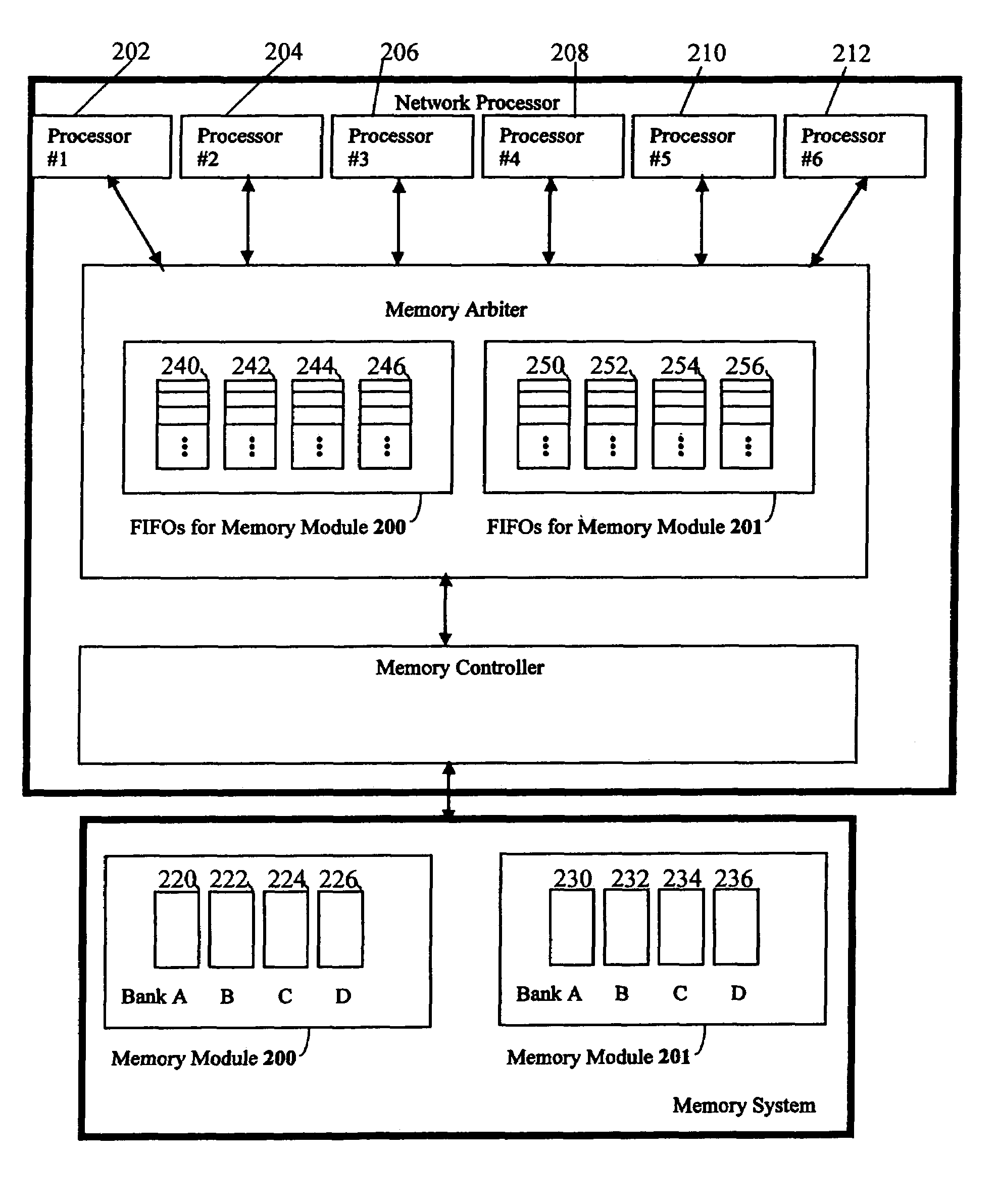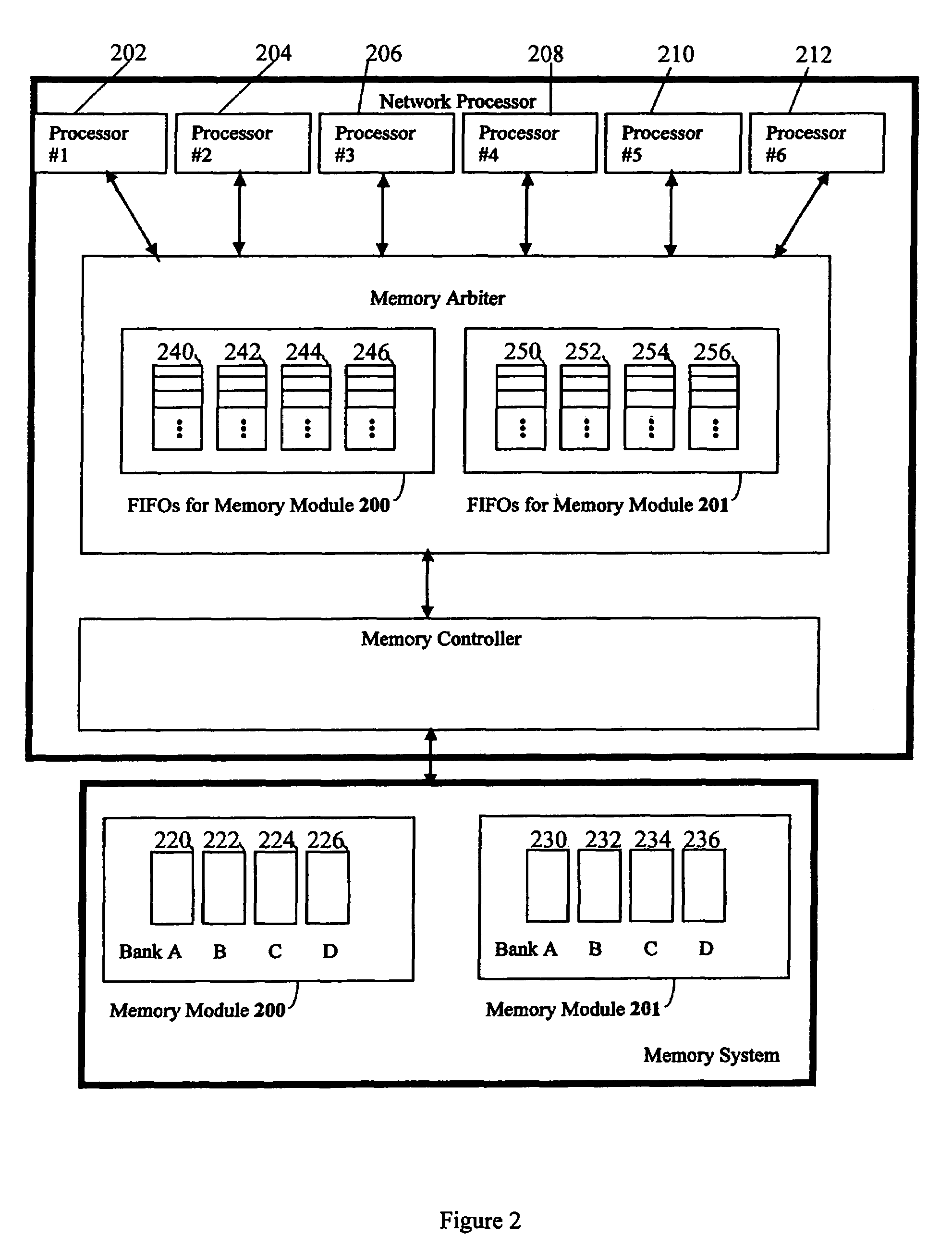Atomic read/write support in a multi-module memory configuration
a multi-module memory and support technology, applied in the field of processor complexes, can solve the problems of reducing the bandwidth to and from the memory system, exacerbate the problem, and affecting the performance of the memory system, so as to increase the bandwidth between the processors and the processors without adverse effects
- Summary
- Abstract
- Description
- Claims
- Application Information
AI Technical Summary
Benefits of technology
Problems solved by technology
Method used
Image
Examples
Embodiment Construction
[0032]According to the present invention, an atomic read / write function is implemented per data block transferred, such that all the data in a data block requested by one processor from a given location in memory is transferred before the same data block is transferred to or from another processor. This procedure solves the stated problem with an atomic read and write function in the memory arbiter of the network processing chip.
[0033]The invention is implemented in hardware, i.e. digital circuits, and no software is used. Each bank of each memory module has an associated FIFO buffer. Thus, each DRAM will have multiple FIFO buffers (four or eight depending on the DRAM module architecture). In memory systems containing SRAMs, each SRAM is viewed as having one bank and, thus, one FIFO buffer. It should be noted that a data block can span multiple SRAMs, and can span SRAMs plus DRAMs, depending on the architecture of the memory system.
[0034]The general purpose processors, numbered 0 to...
PUM
 Login to View More
Login to View More Abstract
Description
Claims
Application Information
 Login to View More
Login to View More - R&D
- Intellectual Property
- Life Sciences
- Materials
- Tech Scout
- Unparalleled Data Quality
- Higher Quality Content
- 60% Fewer Hallucinations
Browse by: Latest US Patents, China's latest patents, Technical Efficacy Thesaurus, Application Domain, Technology Topic, Popular Technical Reports.
© 2025 PatSnap. All rights reserved.Legal|Privacy policy|Modern Slavery Act Transparency Statement|Sitemap|About US| Contact US: help@patsnap.com



